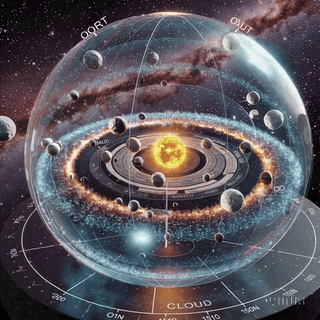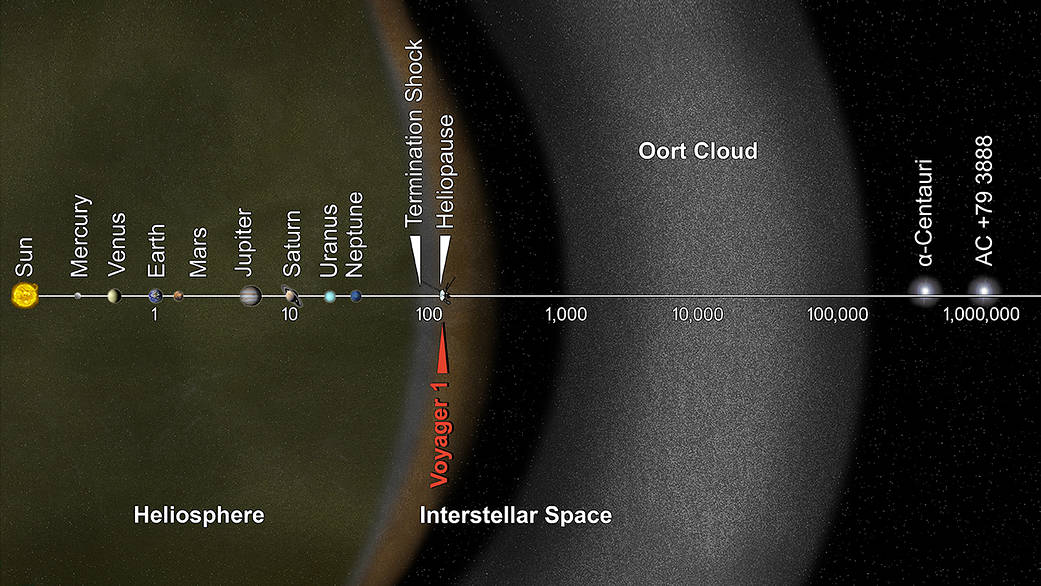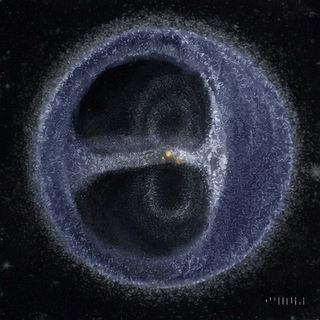
The Properties and Characteristics of the Outer Solar System
The Oort Cloud is generally considered to be at the edge of the solar system, where the gravitational influence of the Sun begins to lessen and form a vast, spherical shell of icy bodies.
Neptune, the furthest planet, lies around 30 AU from the sun, about 70 times closer that the inner edge of the Oort Cloud.
Outside of Neptune, lies the Kuiper Belt, which extends until around 50-100 AU further than Neptune.
The Kuiper Belt
This flattened area outside of the solar system is a donut shaped region that extends extremely far out, and contains many large objects such as Pluto, Makemake, Haumea, Charon, Orcus, Quaoar, Varda, Arokoth and Ixion, which are known as the dwarf planets.
Hills Cloud lies just interior to the Oort Cloud, and extends to the Kuiper Belt, containing 5 times as many objects.
The Hills cloud hypothesis addresses the persistence of the Oort cloud by postulating a densely populated, inner-Oort region—the “Hills cloud”. Objects ejected from the Hills cloud are likely to end up in the classical Oort cloud region, maintaining the Oort cloud.[4] It is likely that the Hills cloud has the largest concentration of comets in the whole Solar System.
The Outer Edge of the Solar System
The Oort Cloud’s distance to the Sun is between 2,000 Astronomical Units and 200,000 AU. (Astronomical Units are the Earth’s distance from the Sun, or between 94.5-91.4 million miles, ~93 million miles)
Comets that are captured by the sun refuel their icy bodies in this outer region of the solar system, there are about 3750 known comets that typically a few miles across.
This is outside of the Heliosphere and the shock wave that the Sun’s Hydrogen Plasma Wind creates, called the Heliopause. From NASA: “The crossing of the heliopause should be signaled by a sharp drop in the temperature of solar wind-charged particles,[31] a change in the direction of the magnetic field, and an increase in the number of galactic cosmic rays.[35] We know this from the voyager data, which were sent out in the 70s.
Jan Oort’s Incredible Works
In 1950, an Dutch astronomer named Jan Oort discovered the cloud and helped us to gain a much greater understanding of our galactic environment, the Milky Way.
He postulated the existing of Dark Matter and also discovered the galactic halo and several comets. The Oort cloud, the Oort constants, Oort Limit, an impact crater on Pluto (Oort), and the asteroid 1691 Oort were all named after him.

Theoretical Insights and Ongoing Debates
The sheer number of objects theorized to exist in the Oort Cloud (possibly trillions) challenges our understanding of solar system formation and evolution.
Theories about its structure, including the possibility of distinct inner and outer regions, are evolving.
Researchers use both observations and simulations to refine their models and some even speculate about the existence of undiscovered large bodies lurking within or just beyond this region.
Additional Reading and References

